13 of the world's most controversial monuments
Gabbi Shaw

- Not all monuments are universally beloved.
- While some simply took a while for locals to come around to, others still inspire controversy. That could be due to their subject matter, their histories, or their appearance.
- Monuments dedicated to Christopher Columbus are coming under fire for memorializing a polarizing figure.
When you think of monuments, you might think of impressive structures like the Washington Monument or the Eiffel Tower that millions of people have visited throughout the years.
But not all monuments receive universal acclaim. From memorials for war criminals or army deserters to statues constructed under dubious circumstances, these 13 monuments have seen their fair share of controversy since their construction — especially now as monuments dedicated to Confederate figures and Christopher Columbus are being toppled, and in some cases beheaded, around the US.
Keep scrolling to learn more about these problematic attractions.
Mount Rushmore was designed by a sculptor who allegedly had ties to the Ku Klux Klan, and it was built on seized land.
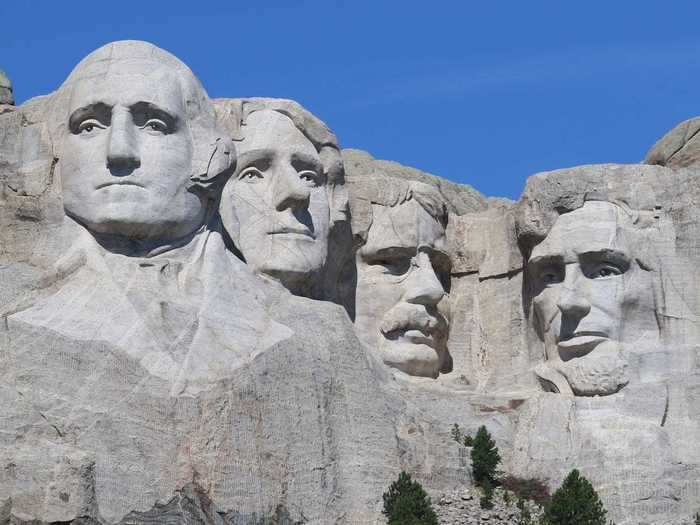
Per the 1980 Supreme Court case United States vs. Sioux Nation of Indians, Mount Rushmore is located on Sioux land. While the court ruled that the tribe should be offered the 1877 price of the land, plus 100 years of interest, the offer was rebuffed.
When the history of the monument, which was completed in 1941, is taken into account, it's surprising that Mount Rushmore has become such an American icon.
In addition to its location and history, Mount Rushmore is controversial because it was designed by Gutzon Borglum, a polarizing figure in his own right as he is said to have developed sympathetic connections with the Ku Klux Klan while working on Stone Mountain, which depicts the leaders of the Confederacy.
He never finished Stone Mountain, instead focusing on Mount Rushmore — the original plan for which, conceived by the state historian of South Dakota, was to depict Lewis and Clark, Red Cloud, and General George Custer. Borglum scrapped that idea, and replaced them with George Washington, Thomas Jefferson, Theodore Roosevelt, and Abraham Lincoln — four white men, two of which owned slaves.
Stone Mountain depicts leaders of the Confederacy.
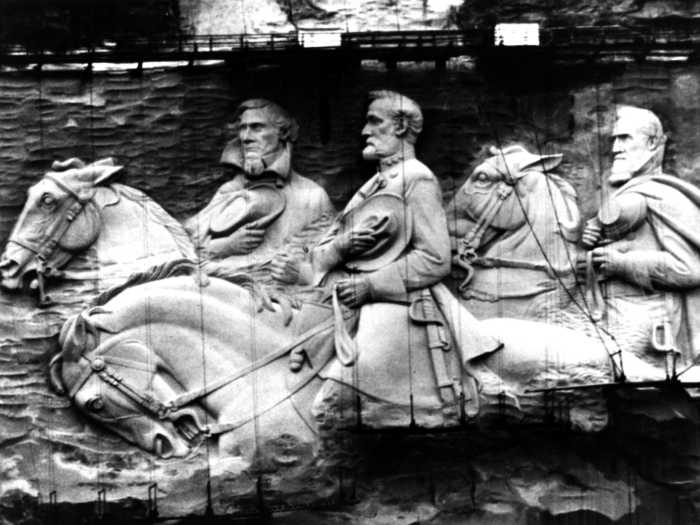
The giant figures sculpted in granite rock on Stone Mountain, which sits outside Atlanta, Georgia, are Jefferson Davis, the only President of the Confederate States of America, alongside Confederate Generals Robert E. Lee and Stonewall Jackson. It was completed in 1972.
The location for the monument is no coincidence either. Stone Mountain has long been considered an important site for the Ku Klux Klan, which famously held its first cross burning there in 1915.
Stone Mountain is just one of many Confederate monuments, statues, and memorials that have come under fire in recent years, but getting rid of Stone Mountain proves complicated, as the mountain would need to be scraped off or blown up.
While some think these Confederate monuments offer valuable history lessons, many more see them as tributes to white supremacy.
Christopher Columbus is an increasingly controversial historical figure, so the many statues across North America dedicated to him are not popular with everyone.
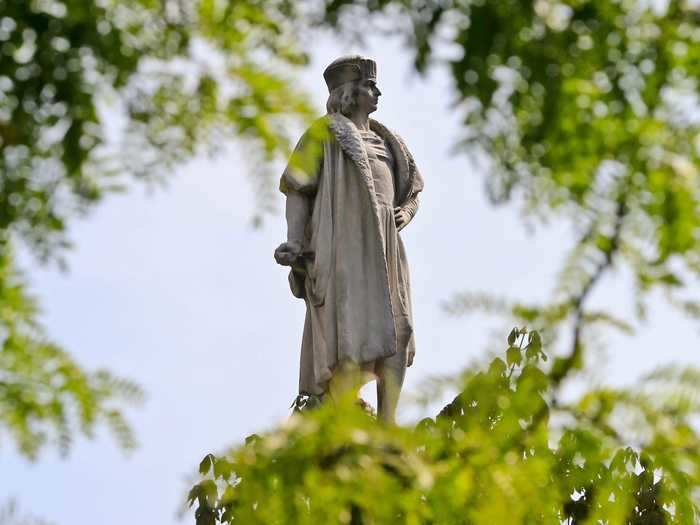
Much like the monuments and memorials to the Confederacy all across America, statues of Christopher Columbus, a man who is incorrectly remembered for "discovering America" by sailing the ocean blue in 1492, are being vandalized and/or taken down. Similarly, many cities are now celebrating Indigenous Peoples Day instead of Columbus Day.
For example, a Columbus statue in Boston, Massachusetts, was beheaded, while another in Richmond, Virginia, was dumped into a lake.
One of the most famous Columbus statues is in Manhattan's Columbus Circle. A man was arrested while painting the statue's fingernails pink in September 2017. The pink represents, according to police records, "the blood on the Italian explorer's hands."
Another Columbus statue in Central Park had its hands painted red that same month, and it was spray-painted with the words "Hate will not be tolerated."
A memorial for Sioux leader Crazy Horse has been called hypocritical, and it remains unfinished after seven decades.
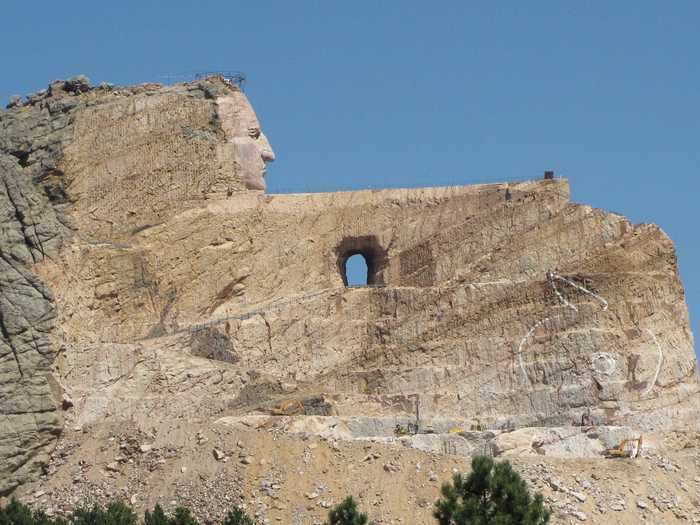
Construction on the Crazy Horse Memorial in the Black Hills began in 1948. While it may one day become one of the largest sculptures in the world, 70 years later, it's still under construction.
Why the long process? Because Korczak Ziolkowski, the designer of the memorial, learned from the misadventures of Gutzon Borglum, the man behind Mount Rushmore, who kept getting delayed due to issues with federal funding. Thus, Ziolkowski vowed to only accept private funding, which has led to a glacial pace of progress.
Critics of this memorial claim that Crazy Horse, a prominent Sioux figure, would never have wanted a giant statue of himself carved into the hills he sought to protect. Also, there are no documented photographs of Crazy Horse himself, so there is also a serious question about the appearance of the memorial.
The Yasukuni Shinto Shrine in Tokyo memorializes war criminals along with Japanese soldiers.
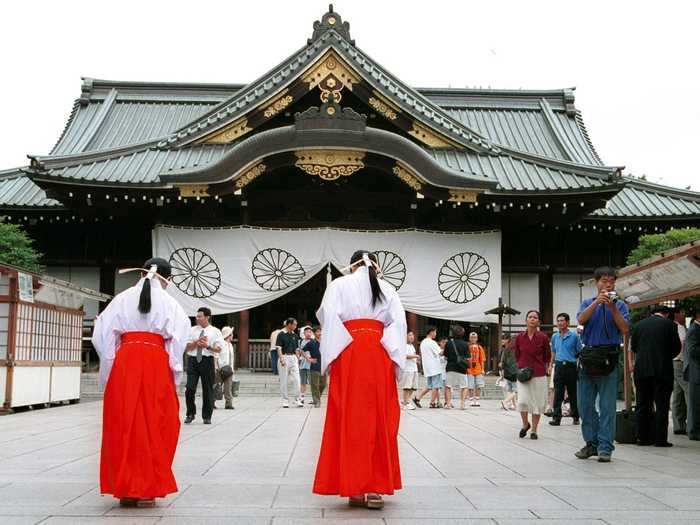
The Yakusuni Shrine, located in Tokyo, Japan, was built in 1869. According to its website, it was established to "commemorate and honor the achievement of those who dedicated their precious lives for their country." Almost 2.5 million names are inscribed inside the shrine — reportedly including the names of at least 14 "Class A" war criminals.
Of those names, there's a general who has been held directly responsible for the attack on the US fleet at Pearl Harbor, a general who ordered a battle that resulted in a massacre that killed 200,000 civilians in 1937, and the architects of Japan's alliance with Germany and Italy during World War II.
The Valley of the Fallen is a memorial for those who died in the Spanish Civil War, but it's also the final resting place of bloody Spanish dictator Francisco Franco.

According to the Independent, the Valley of the Fallen, or Valle de los Caidos in Spanish, is "Spain's most controversial memorial." It earned this moniker due to who's buried inside: General Francisco Franco, the country's former dictator, who rose to power with the help of Nazi Germany and fascist Italy.
The monument, located outside Madrid, Spain, is dedicated to those who perished during the Spanish Civil War in the 1930s. It was finished in 1958, and Franco was buried there after his death in 1975. Many believe it is now more a tomb to him than a neutral place to mourn those who lost their lives in the war.
The construction has also been plagued with rumors of alleged slave labor. The official record states that prisoners captured during the Civil War were offered reduced sentences if they volunteered to help build the monument, but Catalan politician Jaume Bosch called the conditions "something like a Nazi concentration camp."
Not everyone supported the brutal ways revolutionary Che Guevara went about attaining power, making this statue a polarizing tribute.
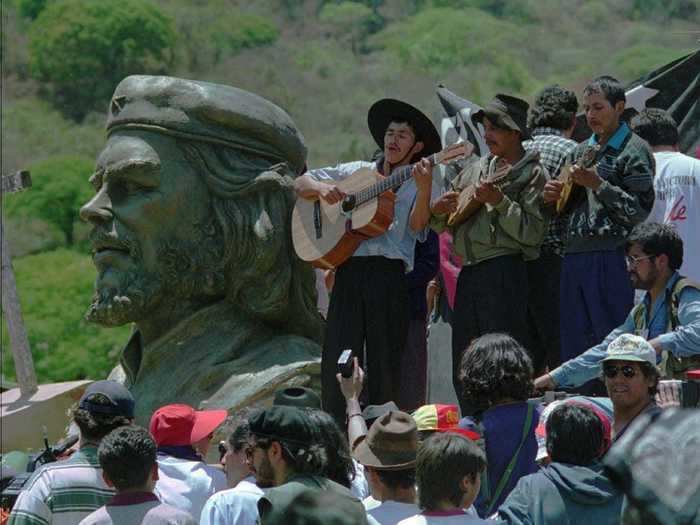
Che Guevara's legacy is complicated. He advocated for social equality but also guerrilla warfare. He was close with Cuban dictator Fidel Castro. Some call him a hero, and others call him a "squalid killer."
La Higuera, Bolivia, has been home to a memorial to Guevara since 1997. It is also the town in which Guevara was killed, allegedly with help from the CIA. The town's economy relies on this event, having become somewhat of a tourist attraction.
It's tough to say whether it's right to capitalize on his death, as well as whether he should be memorialized at all.
The Fallen Angel statue in Spain is dedicated to Satan himself.
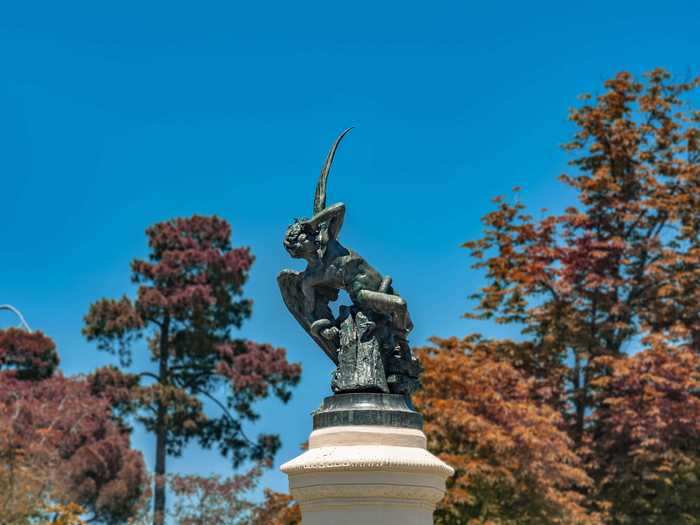
The Statue of the Fallen Angel, or Ángel Caído in Spanish, is located within Madrid's Parque del Buen Retiro. According to Atlas Obscura, it's the only public monument dedicated to the devil. It is believed to have been constructed during the 19th century.
The reason for its controversy is pretty straightforward: It's a monument to Satan inside a country that is famous for the Spanish Inquisition, a court system created to punish heretics (anyone who opposed the state's official religion, Catholicism).
A memorial for Austrian World War II deserters, formally called the Memorial for the Victims of Nazi Military Justice, is not popular with everyone.
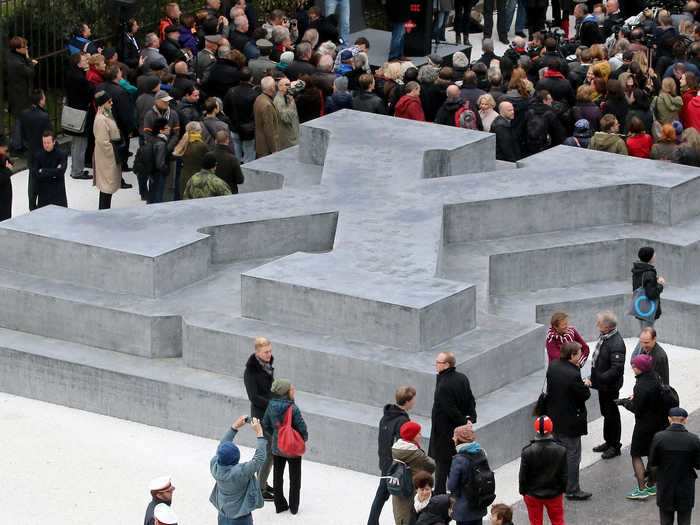
Completed in October 2014 in Vienna, Austria, the Memorial for the Victims of Nazi Military Justice is specifically dedicated to those who died for the "crime" of deserting or objecting to the actions of the Nazi regime during World War II.
Per the BBC, an estimated 20,000 Austrians are believed to have deserted. Those who survived were seen as traitors until 2009 when the Austrian parliament decided to rehabilitate them, as they had been criminalized by Nazis.
Even though opposing the Wehrmacht might be considered the braver option, people opposed the construction of the memorial. In fact, the Austrian Veterans' Association, the OKB, opposed it. "In all countries around the world, desertion is a crime which is strictly punished," Johann Jakob from the OKB, told the BBC.
The Don Juan de Oñate statue in New Mexico has been vandalized multiple times.
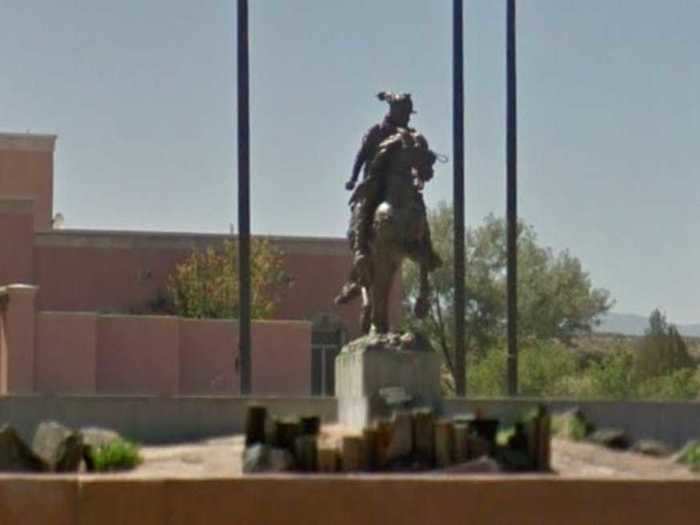
Oñate was a conquistador who was granted permission from the King of Spain to colonize the territory that would become New Mexico. He was brutal, allegedly ordering his men to amputate the right foot off any Acoma Pueblo man over the age of 25.
He also oversaw the execution of hundreds of Acoma Pueblo people, and he was later put on trial and found guilty of "cruelty, immorality, and false reporting."
The statue was built in the 1990s in Alcalde, New Mexico. While some see it as an homage to the man who established what would later become El Paso and Santa Fe, others see it as glorifying a cruel ruler who almost eradicated the Acoma Pueblo people.
Over the years, the statue has been vandalized many times. The most famous incident occurred in December 1997, when the statue's right foot was sawed off in the middle of the night. It remained missing for 20 years until a mysterious group called the Friends of Acoma produced it and claimed responsibility. In 2017, the left foot was painted red, alongside the phrase "Remember 1680" — the year of the Pueblo Revolt, when Oñate killed and enslaved hundreds of Pueblos.
The Monument of the African Renaissance in Senegal has come under fire for its immense cost and claims of corruption.
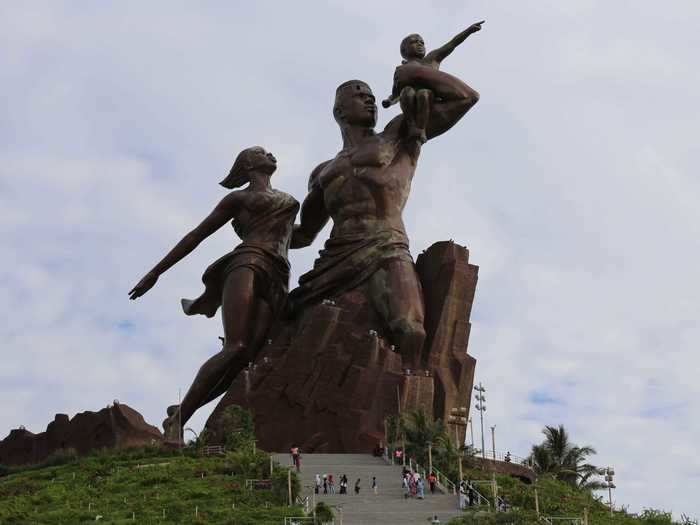
Atlas Obscura writes that, while the figures depicted in the Monument of African Renaissance (or African Renaissance Monument) in Dakar, Senegal, are ostensibly African, they "look glaringly like chiseled Soviet caricatures."
The statue, which clocks in at 160 feet, roughly half the size of the Statue of Liberty, was dreamt up by then-president of Senegal Abdoulaye Wade, who unveiled it towards the end of his term in 2010.
However, his tenure as president was "marred by allegations of widespread corruption and nepotism" — claims that only grew stronger with the statue, which cost roughly $27 million to complete.
People were frustrated by the statue, to say the least. Opposition leader Abdoulaye Bathily said it best when he complained that "The economy has collapsed ... The education system is in a crisis. The health system is in crisis. And yet Abdoulaye Wade is squandering public money."
Ironically, though the statue is meant to represent African excellence, it was built by North Koreans.
This Peter the Great statue calls Moscow its home. However, Peter famously hated Moscow and moved the country's capital city to St. Petersburg.
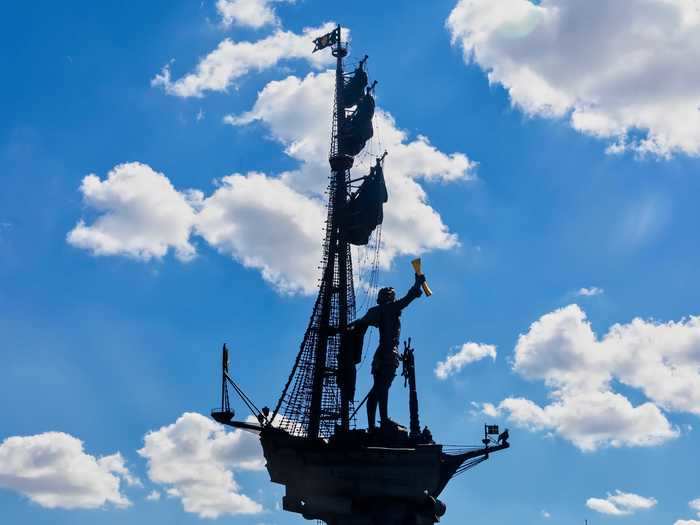
This statue, which is larger than the Statue of Liberty, was unveiled in 1997. It was also named one of the world's ugliest statues in 2015 — and it's almost universally hated by Moscow locals. "I find it repulsive. It disfigured the historical panorama in this particular section of the Moscow River," Moscow journalist Konstantin von Eggert told the BBC.
Peter's famed disdain for Moscow only adds insult to injury. Historically, the ruler had hated Moscow enough to move Russia's capital to St. Petersburg, which he named after his patron saint, the apostle Saint Peter.
The Brown Dog Statue in London caused what has since been named the "Brown Dog Riots."
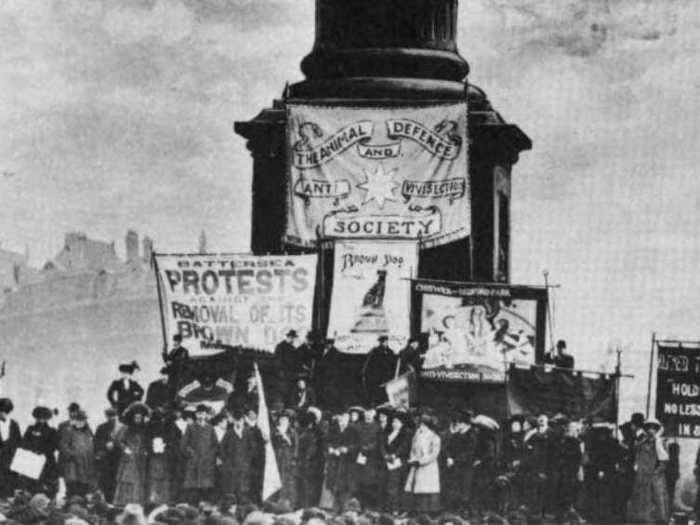
The Brown Dog statue is related to the Brown Dog Affair, a 1903 scandal that uncovered animal abuse at University College London. The university's inhumane anatomical experiments were made public, and while the medical professor involved won a libel lawsuit, the event divided the British people on whether or not vivisection — the practice of performing operations on live animals for the purpose of scientific research — was ethical.
The brown dog was just one of many animals allegedly used in vivisections. To memorialize his sacrifice and others, a statue was erected in London's Battersea neighborhood. It caused violent riots between vivisectionists and their opponents. Many attempts were made to smash the statue with a sledgehammer.
The statue was removed in 1910 and later destroyed, but a new Brown Dog statue was unveiled in 1985, with the same controversial inscription that incited the original riots.
- Read more:
- An Alabama judge has overturned a law protecting Confederate monuments from being taken down
- Schools named after Robert E. Lee are renaming themselves after other famous Lees to avoid spending money on new signs
- The University of North Carolina is giving a pro-Confederate group $2.5 million to preserve a white supremacist monument toppled by students
- Here are all the protected lands at risk of shrinking or changing under the Trump administration
READ MORE ARTICLES ON
Popular Right Now
Popular Keywords
Advertisement